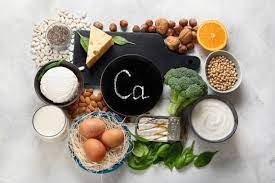Osteoporosis and Falls Prevention Month
Did you know… November is Osteoporosis Awareness and Falls Prevention month?
In honour of these important health issues - we’d like to take the opportunity to provide some insight on osteoporosis and ways to prevent and address it through diet and lifestyle.
Information supplied by Naturopathic Doctor Ceilidh (pronounced Kayley) Flanagan
Osteoporosis is defined as low bone mass that increases frailty and risk of bone fracture. There are often no signs or symptoms during its development and given its insidious progression, it is difficult to identify before it’s too late. Unfortunately, the first sign is often a bone fracture from non-traumatic cause (an injury that wouldn’t usually cause a fracture) – most often in wrist, shoulder, hip, or spine. Another possible sign for osteoporosis (and fracture) is a loss of height. Small height changes are normal with age but a loss of 2 cm over a short period of time, or a 6+ cm loss from young adulthood/peak height may be a sign that a spinal fracture has occurred.
As we age, our bone density naturally declines, but what is considered normal? Around the age of 30-35 (younger for some individuals), bone growth slows down and an equilibrium between bone breakdown and bone-building processes is established. After this point, bone loss begins to outweigh bone growth, and our bone density declines at a rate of about 0.25% per year. It is important to remember that this is a NORMAL part of aging. Beginning at age 45-55 (around onset of menopausal changes/decreased levels of estrogen), women experience an increased rate of bone mass decline, often upwards of 2% per year. Men experience a similar rate of decline starting around age 60-65, due to decreased levels of testosterone. Some other causes of increased bone loss can be found below.
Causes & Risk Factors for Increased Bone Loss:
Advanced age
Certain conditions – menopause, anorexia nervosa, chronic renal failure, Cushing disease, hyperparathyroidism, hyperparathyroidism/overtreatment of hypothyroidism, malabsorption conditions (Celiac disease, lactose intolerance, dairy/soy intolerance, cystic fibrosis, chronic pancreatitis)
Certain medications – antiepileptics, corticosteroids, some cancer medications (androgen deprivation therapy), proton pump inhibitors (stomach pills), aromatase inhibitors
Chronic excessive alcohol intake
Nutrient deficiencies/chronically insufficient dietary intake (restrictive dieting)
Family history
Female sex
History of bone fracture(s)
Low body mass index (BMI)
Sedentary lifestyle
Smoking
We have very little control over this natural rate of bone loss, but what we can control is how much bone mass we start with, and how we protect and nourish our bones as we age. As mentioned, up to the age of 30-35, our bones are in a state of building, more than breaking down. In this phase, we can encourage bone density and strength by participating in weight-bearing and resistance exercise – anything that puts tension or force through our muscles and bones. In relation, we want to limit sedentary time (other than much needed rest and sleep). Incorporating balance exercises are another great way of working your muscles and preventing falls. We can further encourage the bone-building phase by nourishing our body with the necessary nutrients – calcium, magnesium, vitamin D, vitamin K, and protein.
In part 2 of this blog we will discuss the nutrients listed above including what they do and how we can get them in our diet. Stay tuned!
Any questions or issues you’d like to discuss with a health professional? You’re welcome to book a consult with Dr Flanagan to review blood work, nutrition or supplementation, and to make a plan to minimize the effects of osteoporsis in later years.
Osteoporosis Canada - https://osteoporosis.ca/
National Institutes of Health:
- https://www.niams.nih.gov/health-topics/bone-health-and-osteoporosis
- https://ods.od.nih.gov/factsheets/Calcium-HealthProfessional/
- https://ods.od.nih.gov/factsheets/vitaminK-HealthProfessional/
- https://ods.od.nih.gov/factsheets/Magnesium-HealthProfessional/
- https://ods.od.nih.gov/factsheets/VitaminD-HealthProfessional/
Papaioannou A, Morin S, Cheung AM, et al. 2010 clinical practice guidelines for the diagnosis and management of osteoporosis in Canada: summary. CMAJ. 2010;182(17):1864-1873. doi:10.1503/cmaj.100771

